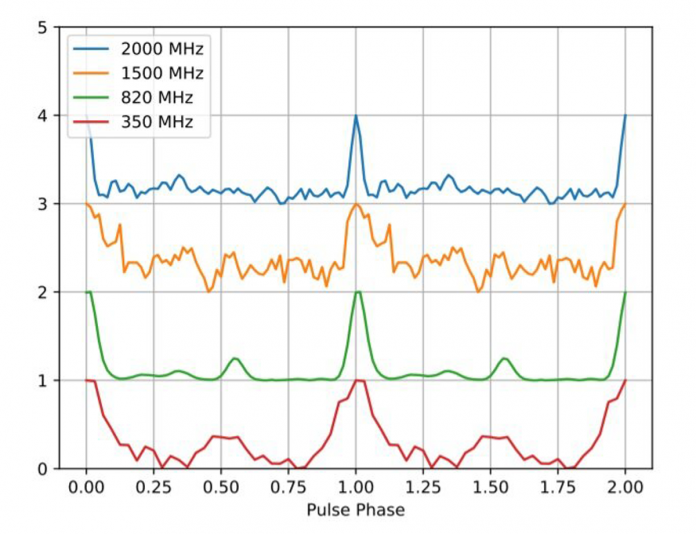Astronomers reported the detection of a new millisecond pulsar. They have used the Green Bank Telescope. The have named the newfound pulsar as PSR J1555−2908. It is one of the so-called “black widow” MSPs. The study has been published in arXiv.org.
The most rapidly rotating pulsars are known as MSPs. Scientists assumed that they are formed in binary systems. The initially more massive component turns into a neutron star. It then spun up due to accretion of matter from the secondary star.
A class of extreme binary pulsars with semi-degenerate companion stars is dubbed “spider pulsars.” These objects are further categorized as “black widows”. They have extremely low mass and they are called “redbacks” if the secondary star is heavier.
PSR J1555−2908 was identified as a gamma-ray point source by NASA’s Fermi spacecraft. A large number of point sources in the GeV gamma-ray sky are known to be powered by pulsars. PSR J1555−2908 was a promising target to search for pulsations. Astronomers have investigated this source with GBT. It resulted in the detection of radio pulsations.
GBT observations radio pulsations of PSR J1555−2908 with a 1.79 ms period. A 5-minute GBT observation at S-band confirmed the discovery. It also determined the pulse width at 559.4 Hz to be very narrow. Scientists analyzed Fermi data and gamma-ray pulsations detected from this source.
PSR J1555−2908 is an interacting binary system with an orbital period of nearly 0.23 days. The neutron star’s mass is estimated to be 1.4 solar masses. The minimum mass of the companion star was calculated to be about 0.052 solar masses. These indicated the “black widow” class of this MSP.
PSR J1555−2908 has a relatively high spin-down power. This makes it a good candidate to search for X-ray pulsations. Other MSPs with comparable spin-down power are known to have bright non-thermal pulsations. Scientists analyzed the available data from the Neutron Star Interior Composition ExploreR. But they have not found any significant X-ray pulsations from this pulsar. This will change as the researchers continue their monitoring of PSR J1555−2908.

